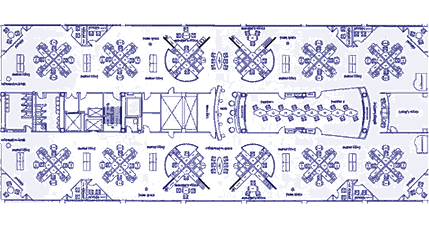School of Art & Design
Loretta Staples, Shaun Jackson, Ray Rackiewicz, Cindy Moon, David Chau, and Uday Gajendar
Collaboratory for Research on Electronic Work (CREW)
Lisa Covi
College of Architecture and Urban Planning
Joe Filip

In directing an interdisciplinary team to develop a model office environment for Ford Motor Company, the concept of the interface served to organize our considerations of the design task.
Most designers design discrete things, attending to the details of isolated forms and functions. Since our ultimate goal was cultural change--to introduce new ideas and attitudes about work--we focused instead on the ways behavior could be invoked through objects, technologies, and space taken as an ecological whole. Just as a screen-based interface directs the behavior taking place between a person and a computer, so too, a social interface is capable of eliciting new dynamics by spatializing and cueing behavior in specific ways.
Our research consisted of several kinds of information gathering. First, we photographically documented our sponsor's work site, paying particular attention to shared resources (conference rooms, hallways, fax stations) and individual workspaces. We interviewed a cross-section of staff about their specific work practices and office space. This information was augmented by data from a larger survey. We reviewed internal documents to learn more about major directives, goals, and incentives. Finally, we conducted focus groups to gain a sense of perceptions and attitudes about Ford culture, now and in the future.
Concurrent with our internal study, we reviewed salient trends in workplace design evidenced by the research of major manufacturers of office furnishings. We also looked at technology trends in collaborative and mobile work, and at corporate innovators in workplace redesign.
From all this we derived the set of criteria that drove the design specifications delivered to Ford, who proceeded with implementation using their primary vendor, Steelcase. The final design is currently being piloted at Ford World Headquarters in Dearborn, Michigan.
While the design specification formed our primary project "deliverable," our ultimate role was social, helping to facilitate an internal dialog and decision-making process that involved many constituencies. In short, the design team itself served as a social interface.
©1999 Loretta Staples